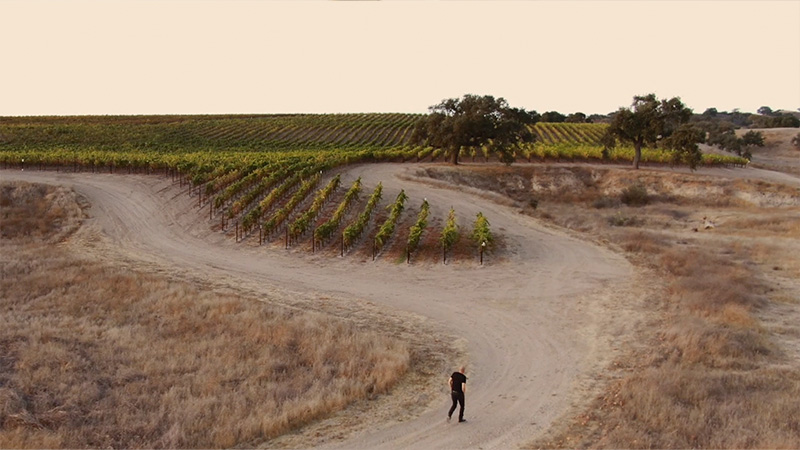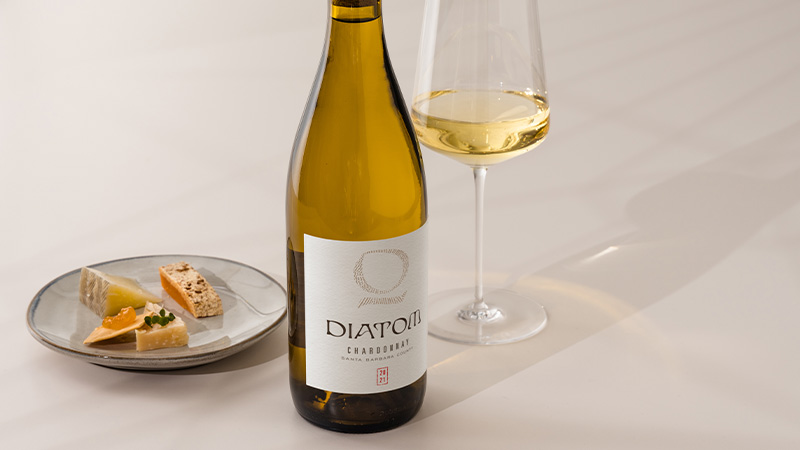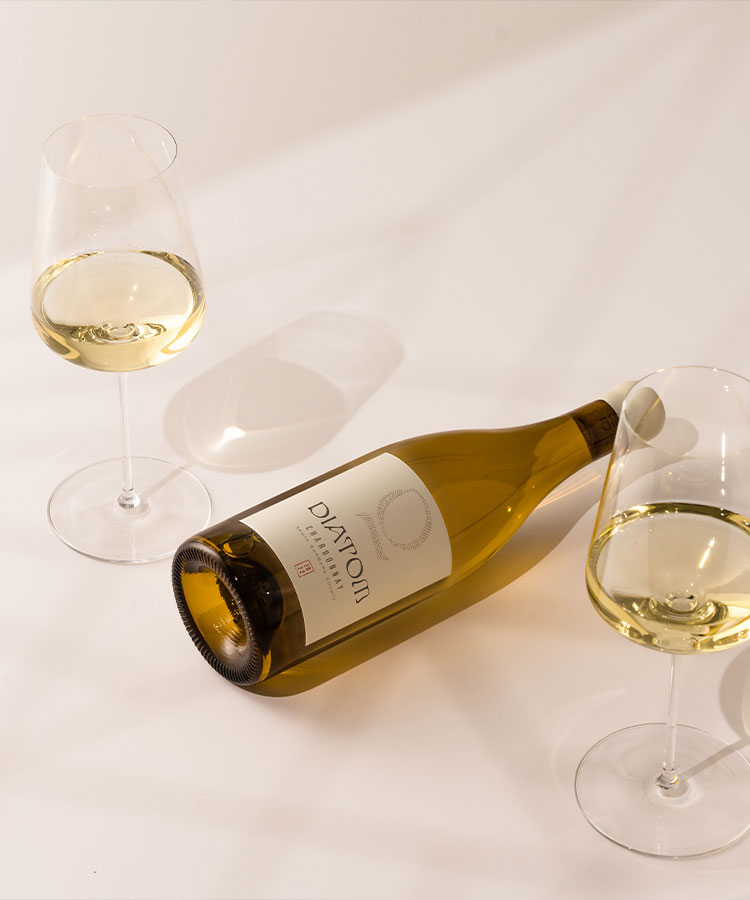
Since winemaker Greg Brewer’s Diatom arrived on the scene in 2005, the unoaked, modern, elegantly-clad Chardonnay has been a cult classic, captivating the attention of wine enthusiasts — a disruptor that defies categorization.
Brewer, a winemaker who expresses himself with an eloquence that often includes culinary or musical descriptors, revealed that crafting Diatom Chardonnay is like “trying to capture something before it can become something else — it’s pent up and really high-strung, but it’s not off-pitch and trebly because there’s all this fat and bass on the front end from our beautiful fruit.”
In pursuit of simplicity, people often like to throw California Chardonnay into two camps, the first being the opulent biggie adorned with ripe fruits, toasty oak, and a creamy, buttery texture. At the opposite end of the spectrum, there’s the lean and racy kind, often associated with cooler climates and high acidity. Truth is, there are plenty of nuances to find between the two as California has a remarkable range of diverse soil types, microclimates — and winemakers.
Diatom Chardonnay, which is fermented in small stainless-steel tanks, blends complexity and harmony at an impressively accessible $25 price point. It delivers a big, lush, fruit-forward profile to delight those seeking indulgence and pleases fans of crisp, vibrant wines with its striking acidity and impeccable balance.
Terroir: The Diatomaceous Earth of the Los Alamos Valley
The winery’s name was inspired by diatoms, the single-celled algae that are ever-present in water, encased in glass in the form of transparent silica. This notion borders the poetic when considering Diatom’s Chardonnay, which is also transparent, bearing everything the terroir, climate, grape, and winemaker has to offer — except for oak. Over millions and millions of years, ancient diatoms accumulated and fossilized into the cliffs and soil of Santa Barbara as diatomaceous earth, which adds a white hue and, more importantly, a distinctive mineral, saline characteristic to the wine.
Technical Precision, Emotional Resonance in Every Bottle

While English doesn’t offer a precise term for “reminiscing in the present,” there must be an equivalent expression that exists in another language — and when Brewer talks about his domain, it feels as if he’s personifying that approach. “When you’re in Santa Barbara, it’s gentle. You’re holding hands on the beach or having a picnic,” he says. “Then when you go up the coast and around Point Conception, all bets are off. It’s only 45 minutes away from Santa Barbara, but the ocean is different up here. The water’s coming from Alaska: whitecaps, cold, deep. We have different sharks. You don’t hang out on the beach out here; you wear fleece, some headphones, and go for a nice walk by yourself. It’s more contemplative.”
This feeling, combined with the climate and terroir, is precisely what Brewer intends to capture in every bottle of Diatom — much like the perfect snapshot, it yearns to blend technical precision with the emotional resonance that a distinct part of the world conjures.
Chardonnay is often likened to a pristine blank canvas, eagerly awaiting the winemaker to infuse their vision. When you have the raw materials Brewer has, there is a tendency to either dress it up or really let it speak for itself. He likens the decision to a chef considering options for a succulent lobster claw.
“You might think, ‘This product is so intense and it can carry interpretation, so let’s sous vide [it], add butter, cream, caviar, gold leaf, uni, foie gras’ — it can carry all of that because it’s so powerful in and of itself, and that path is totally valid,” Brewer muses. “However, the path of Diatom is divergent from that. It’s taking the lobster claw to a sushi bar, slicing it really thin, and adding some yuzu or citrus to balance those bass notes. It’s still incredibly valuable, decadent, beautiful, and luscious, just fresher. So that’s really the model of Diatom. We have mineral, white chalky cliffs around here, so I wanted to share that with the world. To do that, you need the competence and trust to surrender into the landscape and the products themselves.”
It’s a restrained, minimalist approach from a winemaker who has accomplished what he set out to do and was rewarded by being named “Wine Enthusiast’s” 2020 Winemaker of the Year, an accolade that really surprised him.
“I’ve dedicated my whole life to this, so sure, it was thrilling for me, but it was mostly thrilling for our area because I’m wholeheartedly a product of Santa Barbara. I have no formal training — I started off as a French instructor at the University of California, Santa Barbara and I got a job in a local tasting room when I was 21. All of my training, my inspiration — being nurtured and beaten up, it all happened here.
Just like Diatom.
The Lobster Talk Has Me Hungry
The high acidity of Diatom Chardonnay makes it a versatile wine when it comes to savory food pairings. There’s a salinity to it that makes one think of the sea — a fatty raw oyster or a buttery shrimp scampi with lemon zest. For carnivores, a simple, herb-roasted chicken with lemon and garlic or citrus-glazed pork tenderloin would allow the wine’s ample acidity to enhance its savory flavors; caramelized grilled vegetables or a rich risotto with mushrooms would be a lovely pairing, too.
Or simply do whatever you want, as Brewer likes to say.
A Philosophical Approach to Wine

“People bring so much fear, permission, and apology to wine. It’s fascinating and it’s troublesome, right? You always hear the word should: When should I drink this? What should the temperature be? Who should I drink it with?” says Brewer. “At Diatom, we’re ultimately of the opinion that every answer is right. Drink it whenever you want, with whatever you want to eat, whenever you want, and everyone gets an A.”
Unshackle yourself from the ‘shoulds’ and dive into the bold, versatile flavors of Diatom Chardonnay. Get a bottle and embrace Brewer’s philosophy: drink what you love, with someone you love, with whatever you love, and earn top marks in the art of savoring wine.
Chardonnay, Santa Barbara Style
Chardonnay is one of the world’s most planted grapes because of its versatility and extraordinary ability to reflect the terroir where it is grown. And Diatom‘s grapes are raised in some of the finest plots in Los Alamos in Santa Barbara County, with soils composed of diatomaceous earth, sandy loam, and clay found in the Los Alamos Valley. The idyllic climate is also perfect for wine grapes: The days are sun-drenched, accelerating sugar development and creating robust, ripe fruit flavors. Cool nights laced with Pacific breezes are coaxed in by the East-West alignment of the Santa Ynez and San Rafael Mountain ranges, preserving the vital acidity present within each grape. Santa Barbara County’s harmonious interplay of sun, sea, and soil imparts an exceptional character to Diatom’s offering.
This article is sponsored by Diatom Wine.
